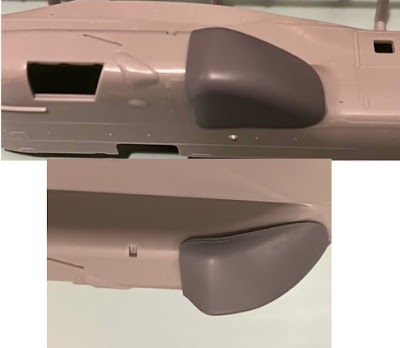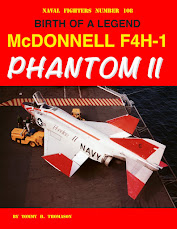For a brief history of USN helicopter mine sweeping, click here: http://tailspintopics.blogspot.com/2022/12/a-brief-history-of-usn-helicopter.html
The RH-3A was the first of the Navy's mine-sweeping helicopters to be used operationally. Nine were converted from early production HSS-2 Sea Kings, BuNos 147139-142, 147144, 147146, 148038, and 148040-041. Some sources claim that conversions included 147138, but according to Tom Chee, it was stricken on 1 October 1959 as a result of Sikorsky flight-test related incident on 9 September 1959. RH-3A conversions didn't begin until December 1965.
The major changes to the SH-3A were the removal of all the ASW equipment and the addition of a large sliding door on the left side, bulged observation windows at the rear of the cabin on each side*, and rear-view mirrors for the pilot and copilot; a beef up of the lower aft fuselage above the tail wheel; and the addition of the mine-sweeping hardware including a tow reel in the cabin. They reportedly received a larger diameter, beefed-up tail rotor at some point due to the loads on the tail rotor while sweeping.
A right side view:
A left-side view:
Mine sweeping gear was deployed out of the right side of the cabin after attachment to the boom.
The mechanism required to rotate the boom and tow cable from alongside the cabin into the streaming position was pretty complicated:
Some other pictures:
The forward fuselage of an HC-7 RH-3A:
An explanation of the "kill" scorecard by the forward entrance steps:
Jodie Peeler noted that RH-3As were also operated from Ozark (MCS-2):
Like Catskill (MCS-1), Ozark was a former minelayer/landing ship that was converted into an
oddball "mine warfare command and support ship," typical of the odd ducks often seen in this era of the Navy. A friend's dad served on Ozark in 1969 in that era (has recollections of being prepared for duty as
Atlantic Fleet recovery ship if Apollo 10 had gone wrong) and that's how I first became aware of the RH-3A.
After being replaced by the RH-53A, the surviving RH-3As were stripped of the mine-sweeping hardware (but retained the cabin doors on each side and the bulged aft cabin windows) and redesignated UH-3As:
* Note that the combat-rescue HH-3As also had aft cabin windows on both sides but these were located one frame forward of the RH-3A's. HH-3As also did not have the left-side cabin sliding door.



















_15_conducts_a_mine_sweeping_exercise.jpg)












_insignia,_in_2018.png)














